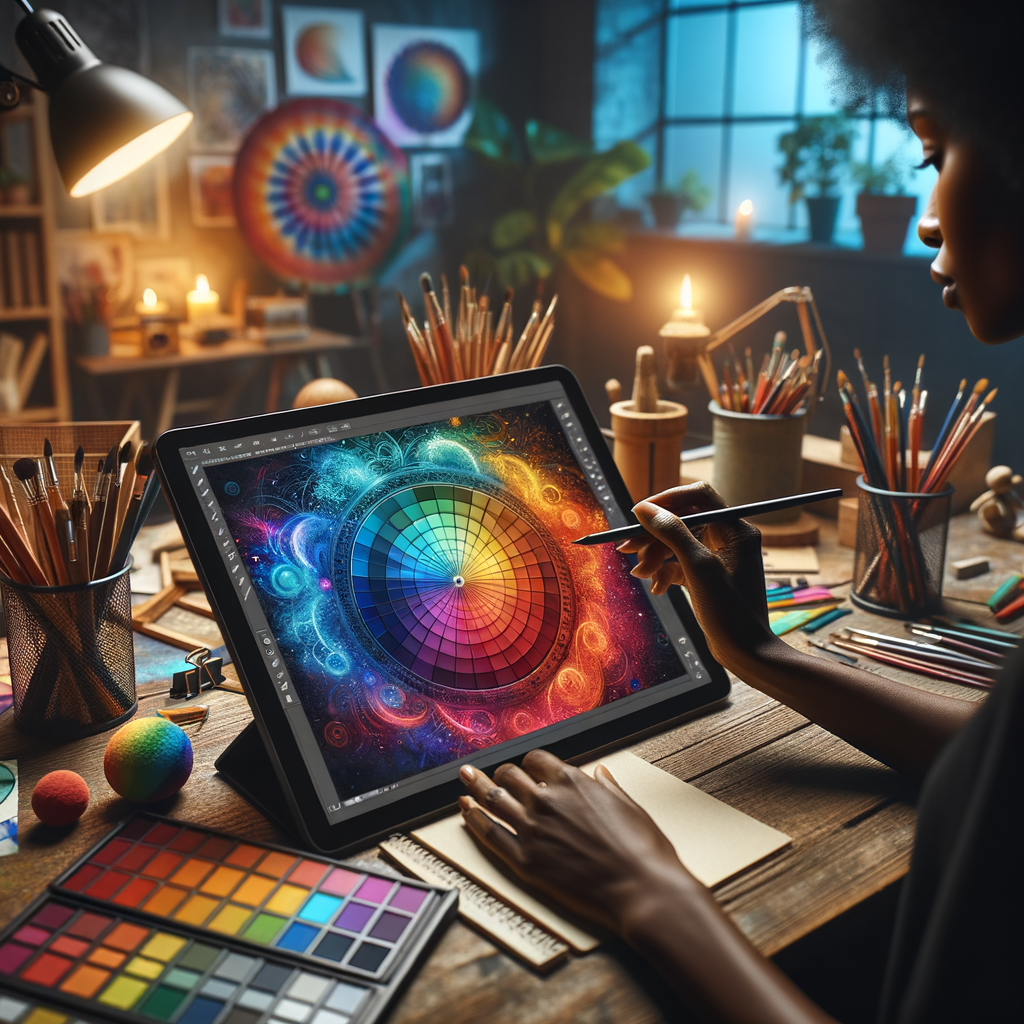
Color is one of the most powerful tools in a digital artist's arsenal. Mastering color theory can significantly impact the emotional and aesthetic quality of your artwork. In this comprehensive guide, we will explore the fundamentals of color theory, how to create effective color palettes, the psychology of colors, and practical tips to enhance your artwork through the intelligent use of color. Whether you're a beginner or an experienced artist, understanding and applying color theory can take your digital art to the next level.
Color theory is a crucial area for any artist, particularly digital artists, who have the capability to manipulate colors in unique ways that traditional mediums can sometimes limit. In this guide, we will cover various aspects of color theory that every digital artist should understand, including basic color concepts, color harmony, practical applications, and psychological implications of colors.
1. Basics of Color Theory
At its core, color theory encompasses the principles and guidelines for mixing colors and creating pleasing color combinations. The traditional color wheel is a foundational concept that every artist should familiarize themselves with. The color wheel consists of primary, secondary, and tertiary colors:
- Primary Colors: Red, blue, and yellow are the primary colors, and they cannot be created by mixing other colors.
- Secondary Colors: These are created by mixing the primary colors: green (blue + yellow), orange (red + yellow), and purple (red + blue).
- Tertiary Colors: These are formed by mixing a primary color with a secondary color, resulting in shades such as red-orange or yellow-green.
Understanding this structure forms the groundwork for more advanced applications of color in your art.
2. Color Harmony
Color harmony refers to the aesthetically pleasing arrangement of colors. When used correctly, color harmonies can create balance and visual interest in your artwork. Here are some popular color schemes you should consider:
- Complementary Colors: Colors that are opposite each other on the color wheel, such as blue and orange, create a vibrant contrast when placed together.
- Analogous Colors: These colors are next to each other on the color wheel, creating a harmonious and serene look. For example, green, blue-green, and blue.
- Triadic Colors: Using three colors that are evenly spaced on the color wheel (e.g., red, yellow, and blue) can create a vibrant and dynamic composition.
Experimenting with these color schemes while creating your digital artwork can help you understand how color affects the composition and emotional tone of your work.
3. Color Temperature
Colors can be categorized as warm or cool. Warm colors (reds, oranges, yellows) tend to evoke feelings of warmth and comfort, while cool colors (blues, greens, purples) are associated with calmness and tranquility. Understanding color temperature helps in setting the mood of your artwork and guiding the viewer's eye.
4. The Psychological Impact of Color
Every color has meanings and evokes emotions, which can be leveraged to communicate ideas through your art. Here are some common color associations:
- Red: Passion, energy, danger.
- Blue: Trust, calm, serenity.
- Yellow: Happiness, optimism, warmth.
- Green: Growth, peace, nature.
- Purple: Luxury, creativity, mystery.
Being mindful of the emotions that colors evoke allows you to create a more impactful message in your artwork.
5. Practical Tips for Choosing Color Palettes
Creating an effective color palette is essential for digital artists. Here are some tips:
- Limit Your Palette: Avoid overwhelming your audience with too many colors. Start with a limited palette of two to five colors that harmonize well together.
- Use Online Tools: Websites like Coolors and Adobe Color Wheel are fantastic resources for generating color palettes that work well together.
- Experiment: Don’t be afraid to try new combinations! Digital art allows for easy revisions, so play around with different palettes until you find one that works.
6. Color in Practice
Now that you have a solid understanding of the theories and principles of color, it’s time to put them into practice. Here’s how you can start integrating color theory into your digital artwork:
- Study Artwork: Analyze pieces by artists whose work you admire. Pay attention to their color choices and try to incorporate similar techniques into your work.
- Practice Color Studies: Create small studies focusing solely on color palettes and combinations. This exercise will help you become more comfortable with your color choices.
- Seek Feedback: Share your work with other artists and ask for feedback on your color choices. Different perspectives can help you see your work in new lights.
7. Conclusion
Mastering color theory is a journey that contributes significantly to your development as a digital artist. By understanding color relationships, practicing different color harmonies, and being mindful of color psychology, you can enhance your artwork and improve the emotional impact of your creations. Remember, the more you explore and experiment with color, the more confident you will become in your choices.
Embrace the power of color, and let it guide your artistic journey to new horizons!

